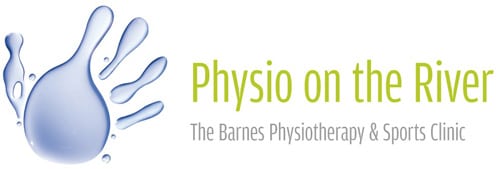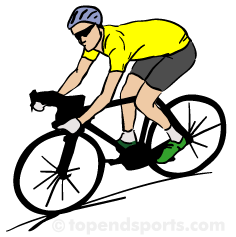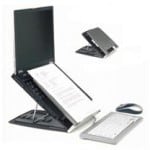Knee pain when cycling – and how to avoid it
Cycling is a great way to get fit but it isn’t without risk of pain and injury. Apart from the obvious flesh wounds related to falling off your bike, the most common problems are usually felt around the knee.
Read on to learn more about the common causes of cycling knee pain and how to avoid the pitfalls.
Why does knee pain occur when cycling?
Cycling is a repetitive activity so aches and pains are rarely related to cartilage tears or damage to the deep cruciate ligaments inside the knee – but much more likely to be an overuse condition.
Biomechanical stresses through the knee, caused by muscle imbalances or incorrect bike setup, are often at the heart of the problem.
Typical causes of knee pain when cycling
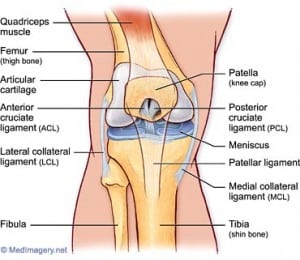
sourced from www.sportsmedicineeuk.co.uk
Pain felt around the front of the knee often arises from the knee cap joint (patella-femoral joint). The knee cap should track nicely in a groove on your thigh bone but is often pulled off course by an imbalance of the muscles controlling it – some may become weak and other muscles may become tight. This can cause the underside of the knee cap to rub against the side of the groove.
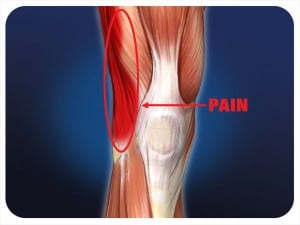
sourced from www.pro-tecathletics.com
The Ilio-tibial band (ITB) is a very strong, long tendon which runs down the outside of your leg from above your hip joint to below your knee joint. It has attachments to the outer side of the knee cap. It commonly becomes tight in runners and cyclists and this can create an uneven pull on the knee cap.
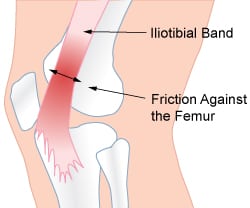
sourced from www.ourhealthnetwork.com
The ilio-tibial band can also become sore as it passes across the outside of the knee joint. If you can imagine that on a long ride your knee may perform up to 5,000 revolutions! As the knee bends and straightens repetitively the ITB can rub on the side of the knee joint and become inflamed.
Those with a tight ITB are often found to be weak in the Gluteus Medius Posterior muscle – a deep buttock muscle that controls the alignment of your leg and stabilises your hip. If this is weak the leg will tend to drift inwards affecting the alignment of the leg.
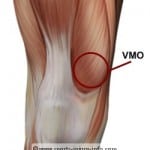
sourced from www.theinjuredknee.com
Those with a weakness of the inner quads – the vastus medialis muscle can also can also experience pain in the knee. Weakness on this inner side means the knee cap can be pulled more to the outer side.
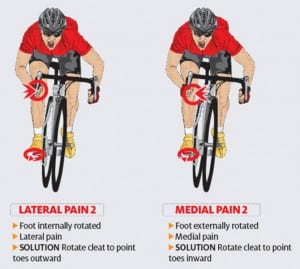
sourced from www.bikeradar.com
It may be hard to believe but altered foot posture (rolling the ankle out or in too much) can also impact the knee.
A scoliosis (curve in the spine) can affect the alignment of the pelvis and this can also affect the working of the knee.
How you can avoid knee pain when cycling
Getting your bike set up correctly is essential. For instance, if the saddle is too low this will increase the bend of your knee. The distance of the saddle from the handlebars can have an impact on the knee angle too.
Sometimes your bike set up can be perfect but a tight hamstring muscle or a small difference in leg length, for example, can affect the biomechanics of your cycling action.
The best treatment for knee pain?
Our team of physios are trained to analyse movement and we specialise in treating all these issues which can lead to knee pain in cycling. We will:
- Check out your alignment – not just in standing but in your cycling position too
- Test the length and strength of the muscles so we can identify any muscle imbalances
- Look to see if any old injuries have left you stiff in any of your leg or back joints
- Look at the way you move – you may habitually cycle with your knee facing inwards, for example.
If you are suffering knee pain, just pop into the clinic and make an appointment or click here to contact us by phone or email.
If you enjoyed this take a look at our other cycling blogs!
